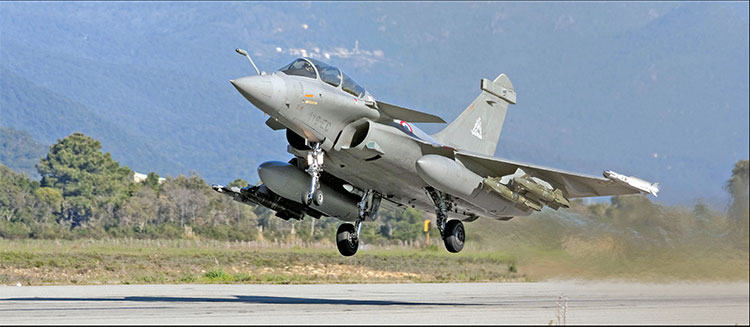Money Over Matter | In Defence of Economics
 Maj. Gen. Mrinal Suman (retd)
Maj. Gen. Mrinal Suman (retd)
While addressing a think-tank function on 4 May 2017, Army Chief General Bipin Rawat stressed the need to appreciate that defence and economy go hand in hand. “Only strong military can help in ensuring stability along the borders and within the nation in the hinterland and that will help to develop the economy,” he said. He lamented the fact that while developing the economy, military was not getting its due share.
The policy governing allocation of resources for the defence of a country is a dynamic process that changes with political dispensation in power, geo-political milieu and threat perception. Investment in defence is not carried out to utilise spare and disposable resources but is an essential cost that a nation has to pay to acquire assurance of security. And, without assured national security, economic prosperity remains a pipe-dream. Indisputably, militaries in all countries remain dissatisfied with the quantum of resources allotted to them and demand more. India is no exception.
Whereas demand for additional allocations by the armed forces is understandable, it is equally incumbent on them to exercise extreme financial prudence in defence expenditure to ensure optimum utilisation of the scarce resources. The armed forces owe it to the nation. Prudence means exercise of ‘care and good sense’ while making a decision or taking action. Financial prudence implies acting with utmost propriety and acumen; and exercising due care, caution and attention to obtain best value for money.
The discipline of defence economics is the most potent tool that helps ensure financial prudence. It encompasses all aspects of defence imperatives that have cost implications. Contrary to the common misconceptions, defence economics is not an academic exercise of theoretical value that confines itself to case studies to ascertain expenditure data of every military action or policy initiative. On the contrary, it is dynamic in nature and provides a well-evolved methodology to facilitate application of economic logic to defence issues. It is an instrument of decision making.

Dassault Aviation’s Rafale
Defence economics is a very broad-based discipline and embraces all aspects of the economics of defence. It has been defined as a field of national economic management concerned with peacetime and wartime military expenditure. It includes defence expenditure (both as budgetary allocation and as a proportion of gross domestic product); expenditure related to inland security; defence industry, international arms trade, defence offsets and arms embargoes; and relationship between defence expenditure and economic activities both domestically and externally.
Defence economics has some limitations too. As military is not a profit centre in the corporate mould, it is difficult to compute its productivity and cost-effectiveness. Any attempt to measure military’s usefulness in terms of tangible gains that a nation can draw is bound to be flawed. Further, it is difficult to explore socio-economic issues involving the military, especially in the developing nations where it performs the functions of a catalysing agent for national integration, economic development and social change.
Every nation has well-considered National Strategic Objectives (NSO). These are based on a nation’s aspirations as regards its envisioned place in the comity of nations in short, medium and long terms. All its planning and initiatives (foreign policy, economic reforms and military strength) are directed towards achieving these objectives. As there may be multiple routes to achieve NSO, it is for the defence economists to analyse them and suggest the most economically beneficial option. In addition, defence economics imposes caution against seeking
Subscribe To Force
Fuel Fearless Journalism with Your Yearly Subscription
SUBSCRIBE NOW
We don’t tell you how to do your job…
But we put the environment in which you do your job in perspective, so that when you step out you do so with the complete picture.








